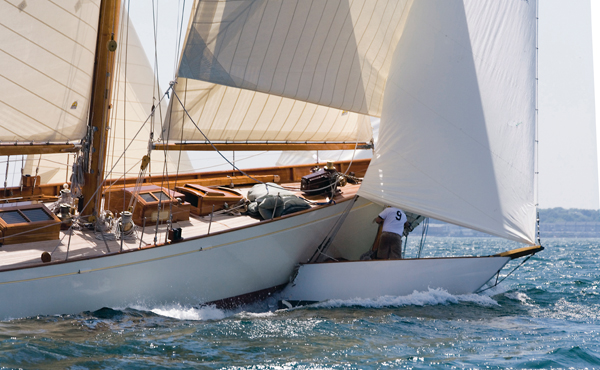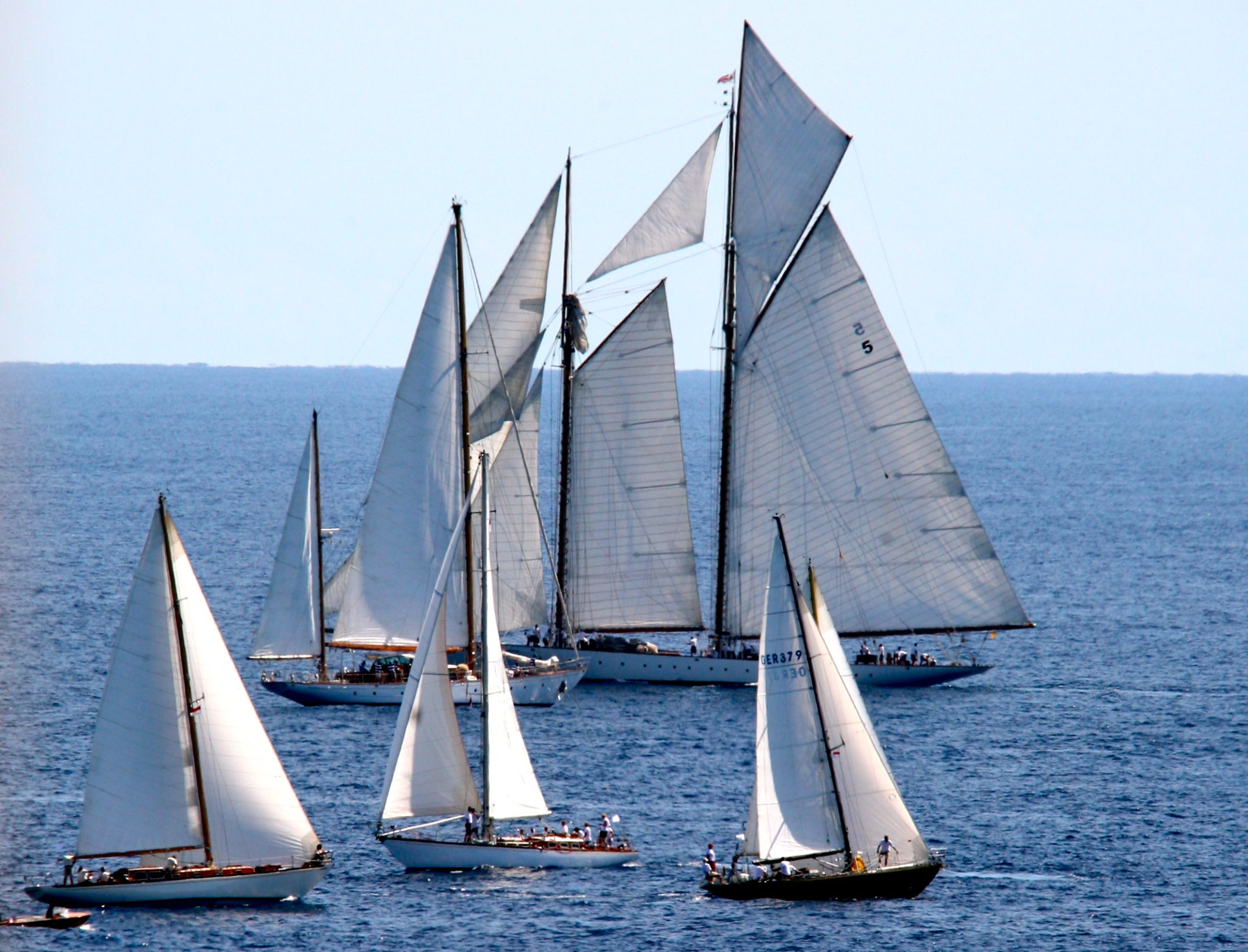The Classic Racing Issue #3: The Forgotten Fun Factor.

Let’s face it, if you don’t look at handicap racing with the right attitude, it can get kind of silly. Tons of fun, but still silly: Handicapping fleets in classic regattas becomes burdened by the fact that handicap racing, in general, is so flawed. This is true no matter what kind of boat you own. That’s why, we believe, it’s important to look past the ratings rules and try to rearrange our own attitudes toward racing.
After all, we are trying to have fun out there. And fun is not always easy.
To fully expect handicapping systems to create a level playing field for all yachts, over all conditions, is an expectation doomed to failure. Those measurements and algorithms that describe boat speed are deeply complex and interrelated. And, each rating system has unique qualifiers to meet varied levels of sophistication and discipline—some are more cumbersome than others. For the CRF system, to express sound ratings derived from a simple formula based on owner-measured data is frankly, a tall order. Even the biggest, most sophisticated VPP-based rule, the IRC SuperYacht rule, which costs many thousands of dollars to administer each year, has hiccups now and then.
The Classic Rating Formula has handicapped classic racing for three decades now and helped support a vibrant classic racing scene. Last year, the CYOA undertook a revamp of the CRF to help correct some long standing issues. One virtue of the older CRF rule was its simplicity: Any owner could complete an application for a certificate in about 20 minutes with no more than a tape measure. This did enable a low-cost system. But, it was a system that relied on human input and subjective adjustments to compensate for rudimentary mathematics.
We participated with the CYOA technical committee in its review of the CRF, along with a study of alternative measurement rules. Ultimately, it was decided that a low-cost, less burdensome rating system remained best-suited to serve the CYOA’s goals for the classic sailing community. Tweaks were made to fine-tune the existing formula to work with the simple measurements and to add some tools. We inserted calculations that account for data like wetted surface and displacement. And, subjective input is now basically removed. The rule is now entirely mathematical, objective, and transparent. Ratings for fleets are available with the click of a mouse.
The revised CYOA rule is intentionally a simple one, even though that simplicity comes with flaws. It won’t rate every boat fairly, in every condition and on every race course. It can’t.
And that means we have to ask, what can we consciously do to dial back our sense of what we need to have fun on the water? How can we remind ourselves of the lovely settings for these races? What can we do to relax a little? What is important to each owner to make boats perform? Do all those tiny little details like Cunninghams and shroud tension devices matter?
In traditional sailing, less is usually more.
Celebrate the Flaws.

We love getting on a race course with lots of other boats of all shapes, sizes and ages. The obvious trick is to level the playing field to allow boats their turn to compete for the win. But let’s not abandon handicap racing because we intentionally keep the rule simpler to operate and low-cost to manage. Let’s also avoid the random placing of boats into classes that do not suit those boats. Why is it that we want to go out there in the first place? Well, it’s sailing! It’s fun, we’re connected to the water and we get to party with our friends. We don’t race because we need to win a competition, just any competition. If so, we could pick a lot more cut-and-dried sport, like golf– or checkers. We race for the thrill of being out there in a community, and every time we step onto a boat, there’s that urge to work hard with your mates to make her fast and safely guide her from point to point. This is what feeds direct to the spirit of the competition. Wind, weather, and the spectacle of sailing hard for that goal. That’s winning.
Should we demand a more sophisticated rule? We don’t think so. In fact, we think the real answer in better racing is re-adjusting what it means to “win.”
Winning Finishing 8th
Here’s one of our favorite stories: Years ago, one of us owned a 31-foot classic that was cruised with its family on an absolute shoestring: Bagged-out sails, gear that made ominous cracking sounds — until it failed spectacularly. There was the varnish that was worn through or threatened to peel off entirely. We all know the scene.
But we looked forward to our one foray out onto the race course each year. We knew our boat wasn’t equipped to compete under the race’s rating rule. So our strategy was different. We made our own class. We picked several boats we knew were should be good matches for. And we gauged our sailing success against them. Who cared if we took 8th. It was all about nibbling in a that competitor on the last short beat to finish, sniffing out the favored pin end, shooting that unbalanced line to windward to take that 8th place by a half a boat length.
We’re sure other sailors do the same kinds of games, but those still are some of our fondest racing memories. And we have superyacht regatta wins under our belts.
So while it’s important to keep ratings rules and classes consistent between events, why can’t we carve out a reasonable dialogue that enhances our understanding of what makes good racing … good? That’s the way to accept the good with the bad, the pretty with the ugly, and the salty with sweet.
Maybe this is the secret of great classic racing Success on the water is all about not setting the wrong finish line?